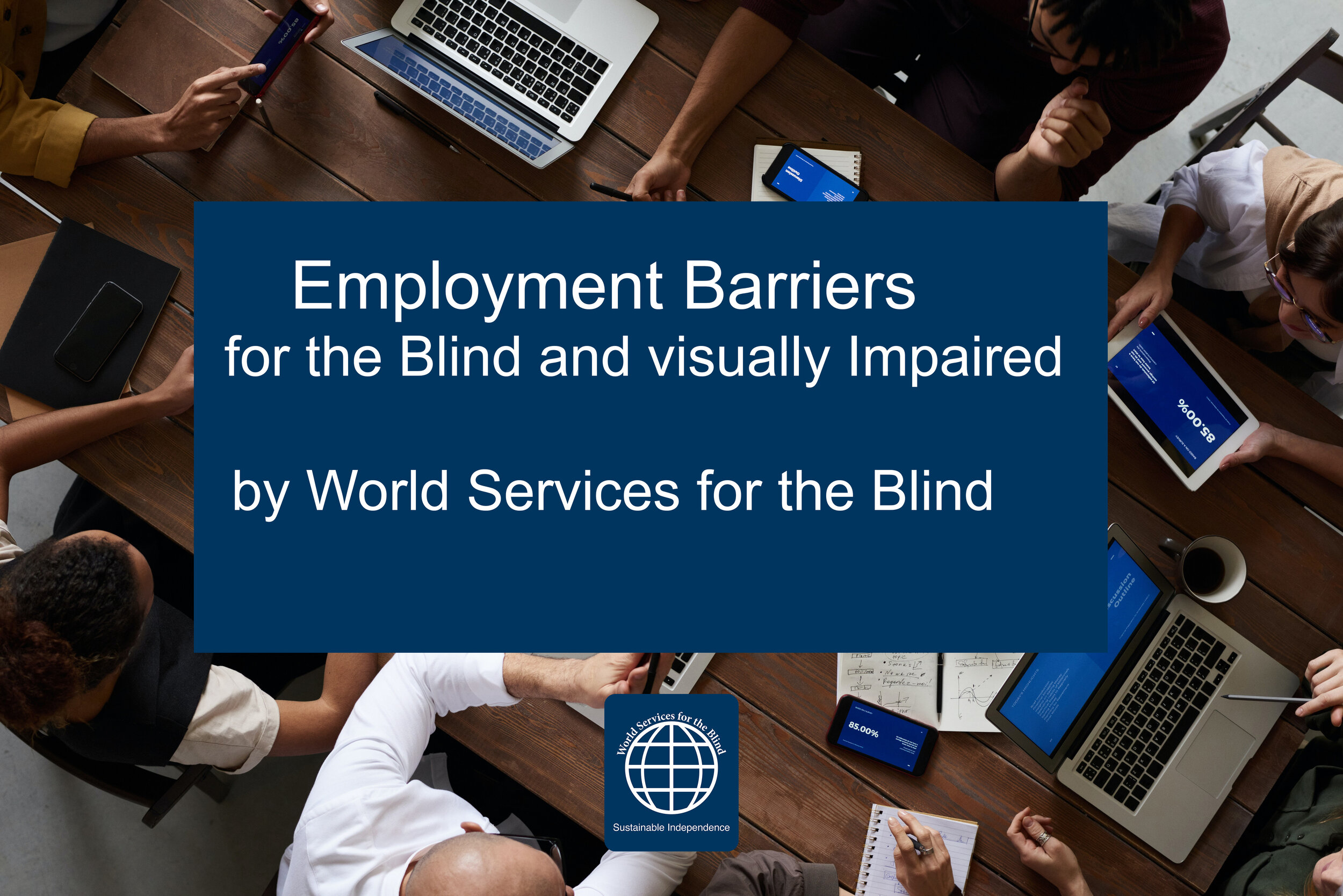Employment Barriers for the Blind and Visually Impaired
/overhead shot of people working at a large conference table with notes and computers. Blue box with white text “Employment Barriers for the Blind and Visually Impaired by World Services for the Blind” with the WSB logo underneath
Employment Barriers for the Blind & Visually Impaired
Employment Barriers for the blind and visually impaired can range from a wide variety of reasons from lack of transportation to negative attitudes from employers. It is no secret that the unemployment rate for the blind and visually impaired is higher than the average population, even within the disability community. With the unemployment rate for the blind and visually impaired at over 70%, there are so many barriers that can attribute to this number that can feel vast and overwhelming. But that is exactly why World Services for the Blind does what we do! We even have an 85% employment rate for graduates of our career training programs. In this blog post, we wanted to share some of the top employment barriers for the blind and visually impaired and how to overcome them. We also recently put out an employment barriers survey that we are excited to share the results! In this post, we also share some tips if you are an employer.
Transportation
100% of participants in our Employment Barriers survey found transportation to work to be a barrier when they are trying to find employment. Oftentimes, those who are visually impaired and blind work in areas where it might be difficult to catch a bus/train, and Paratransit may not run in rural areas. Employers also may not be understanding that an employee takes public transportation and they may be a few minutes late/early.
Lack of Training
Not only is the need for reliable transportation an issue, but the need for self-efficacy training, meaning those who are blind and visually impaired need to feel confident in their abilities to navigate transportation. This can be more difficult for those who have lost their vision later in life as opposed to those who have been blind or visually impaired their entire lives or since childhood.
Negative Attitudes from Employers
Even if transportation and self-efficacy are not an issue, employers are often skeptical of how someone who does not drive will get to work. This can happen before someone even goes in for an interview.
One participant in our survey noted that he was questioned about how he would get to work in the interview. He made the point “If I didn’t have [my transportation] figured out before I walked in the door, I would not be in the interview”.
Another participant said that a secretary told the interviewee she needed a car for the position, which was not the case nor was it stated in the interview process.
These negative attitudes come from a lack of education and understanding about the blind and visually impaired community.
Lack of Workplace Accommodations
Negative attitudes from employers can cause those who need accommodations to not ask for them out of fear. Without the proper accommodations, those who are blind and visually impaired are not able to do their job effectively.
What employers don’t realize is that accommodations for those with disabilities can cost the company almost nothing! According to the Job accommodations Network, the average cost for accommodations is $500 (much of which can be covered in other ways, not by the employer!).
One reason for this may be that blindness and vision impairment is a low incidental disability and employers do not know how to accommodate them nor do they realize all of the assistive technology that can allow a person to do the job.
What can I do as a blind and visually impaired individual?
The first step is gaining the life and employable skills you need to maintain a job. This can include life skills training or even joining one of our career training programs.
These barriers can seem intimidating but don’t let them get you down! We know that as someone in the blind and visually impaired community, you have to work five times harder than those who apply who are able-bodied but WSB offers industry-standard certifications, workplace readiness training, an environment that fosters time management and soft skills, WSB also works with our graduates to secure internships, as these are so important in gaining employment, especially as someone who is blind and visually impaired. Internships allow employers to see what a WSB graduate can bring to the workplace and are a great way to get your foot in the door.
What can I do as an employer?
Employers can do a lot to help mitigate these barriers. The most important being education. Don’t make assumptions on what a person with a disability can do or what they need. Make sure to ask if there are any accommodations that can be made or that they need. And believe it or not, the blind and visually impaired know how to use a computer without sight! There are many resources available but one of the best is the Job Accommodations Network. It lists all kinds of accommodations for all kinds of disabilities.
Another important aspect is to make sure your application is accessible! This can easily be done by providing an accessible form online or by allowing potential candidates to email their resumes and cover letters if the application portal is not accessible.
Once hired, make sure your workplace is accessible (we have a whole blog post on how to do that!).
If you are ready to hire a great new member of your team, be sure to check out our page on how to Hire a WSB graduate.


